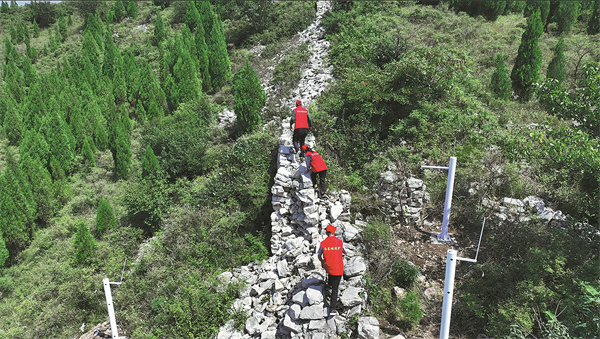

To tackle challenges in protecting the Great Wall of the ancient Qi state, the oldest existing Great Wall in China, the legislature in Shandong province has passed a regulation protecting the structure that will take effect on Jan 1.
The Qi state wall stretches across Shandong for 641 kilometers, from the province's capital Jinan on the banks of the Yellow River to the coastal city of Qingdao in the east. It was built during the Spring and Autumn Period (770-476 BC) and the Warring States Period (475-221 BC).
A section of the wall is in Guangli village, Xiaoli town, just a one-hour drive from downtown Jinan.
Located among an expanse of fields, the rammed earth wall stands three meters tall and spans 260 meters.
"Historical records say the Qi state built the wall here to defend itself from its enemies, as well as to stop flooding," says An Xingzhu, who worked at the town's culture station for more than three decades. A key task of the station is to protect cultural relics.
"I have known this wall since I was a child and we used to call it a 'range'," he says.
In the 1970s, parts of the rammed earth wall were dug out and used by farmers for their land, but since the early 1990s, the local government has started to take measures to protect the wall, says An.
Rapid development and construction have brought many new problems and challenges in protecting the Qi wall, according to Qi Yan'an, an official with the provincial justice department, who addressed a news conference last month.
"It is necessary to provide a solid legal guarantee for its conservation," he says.
The new regulation specifies the responsibilities of various departments — reform and development, education, public security, human resources, natural resources, environmental protection, urban and rural construction, water conservation, transportation and emergency management.